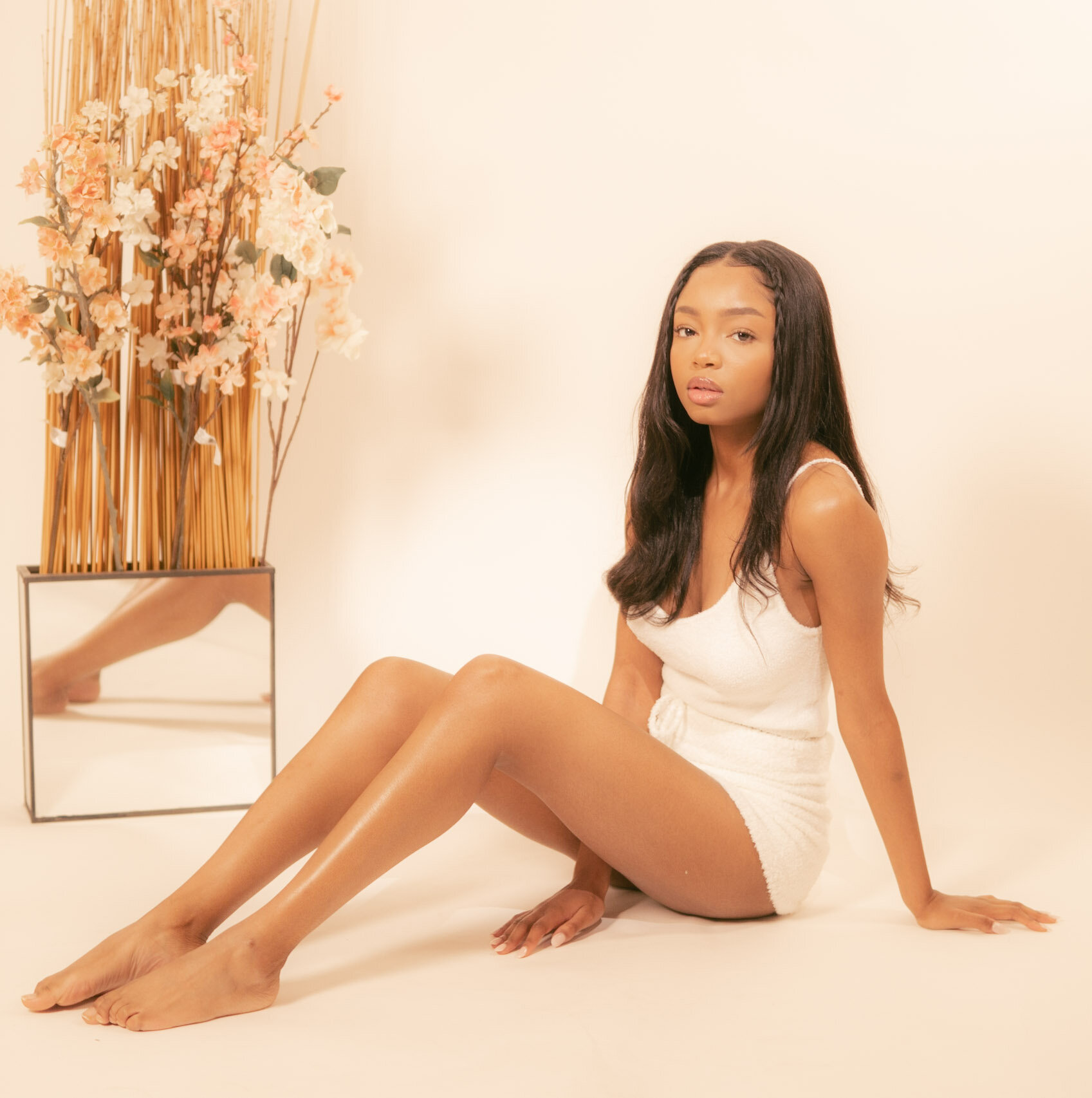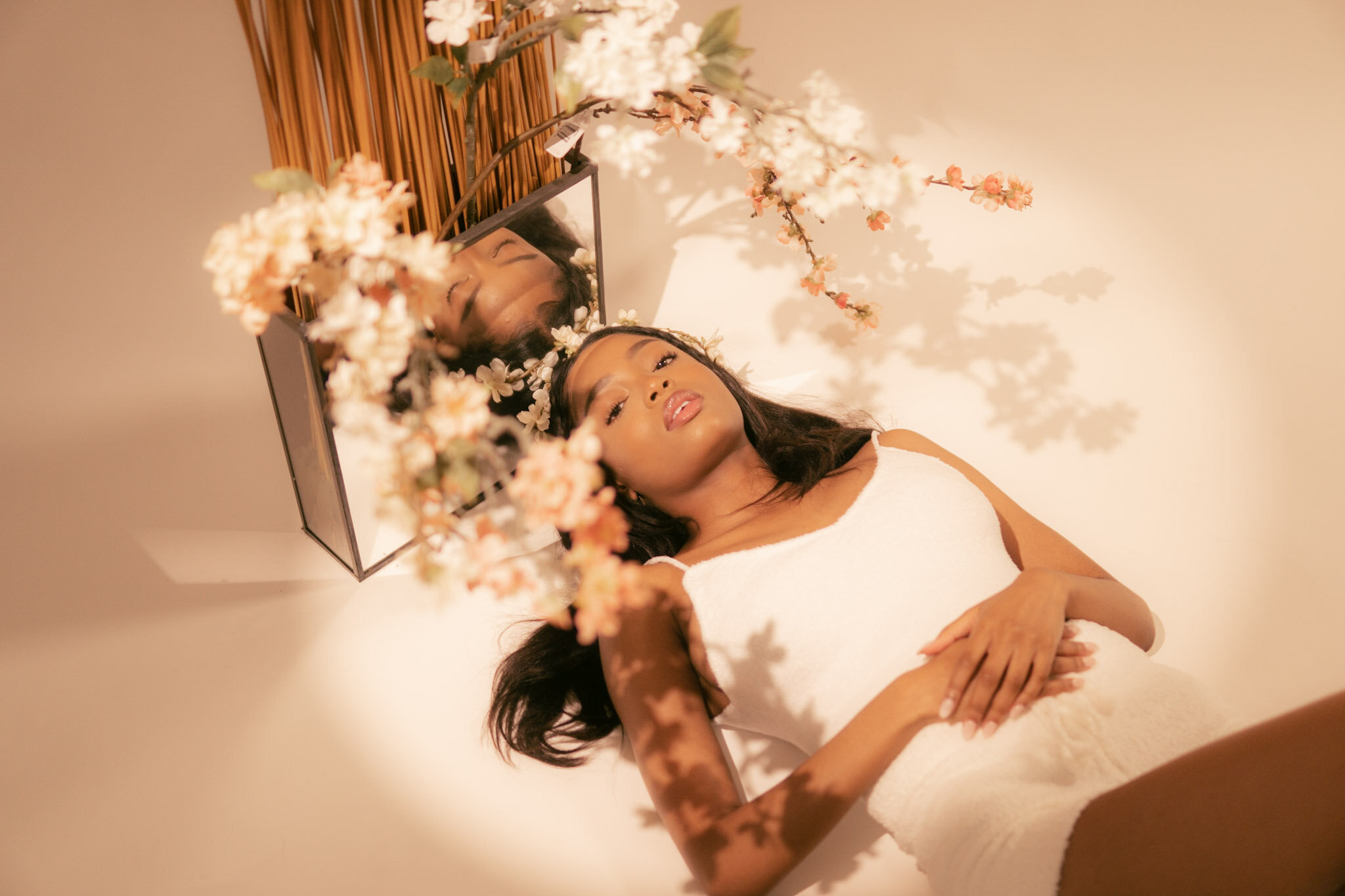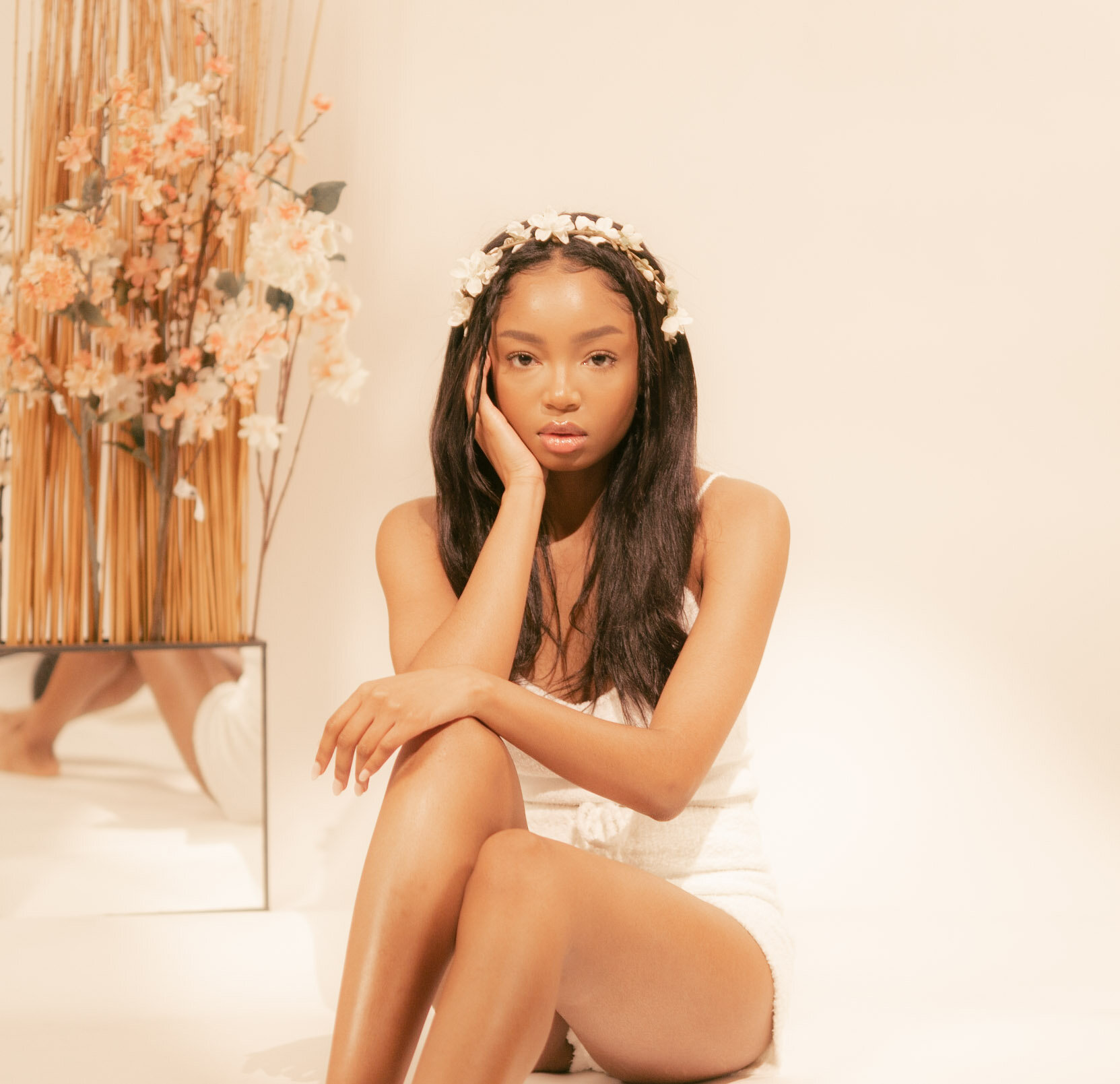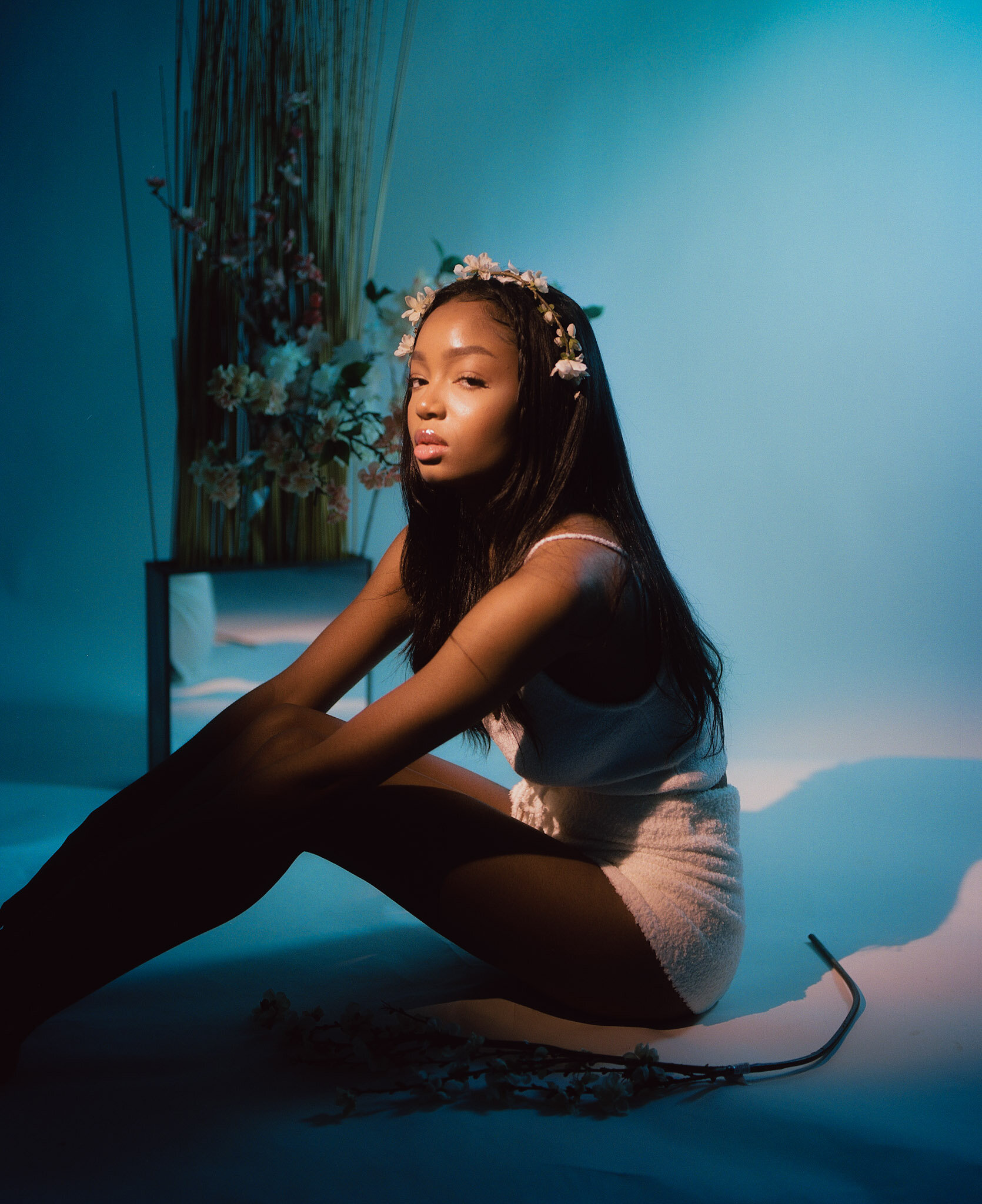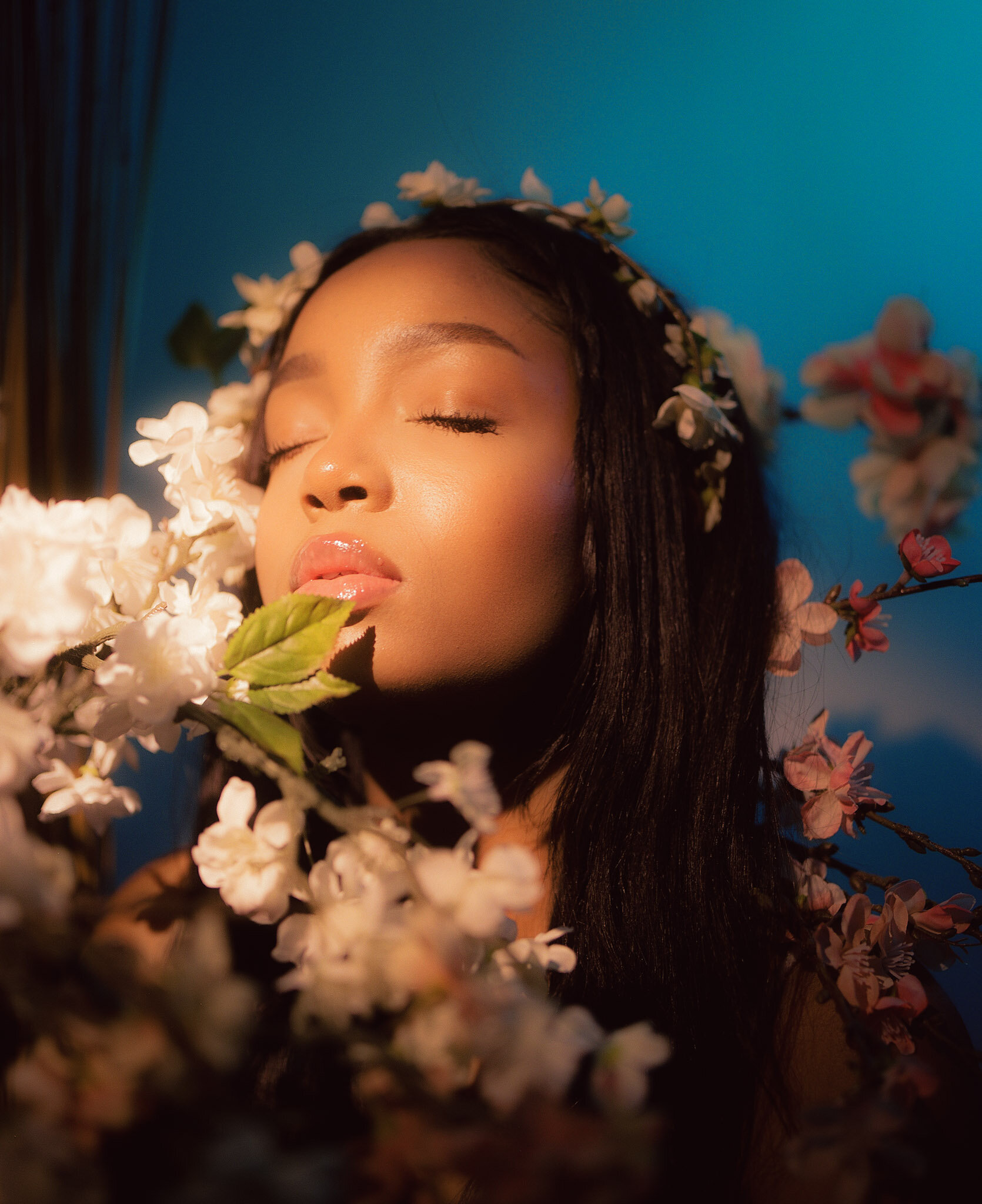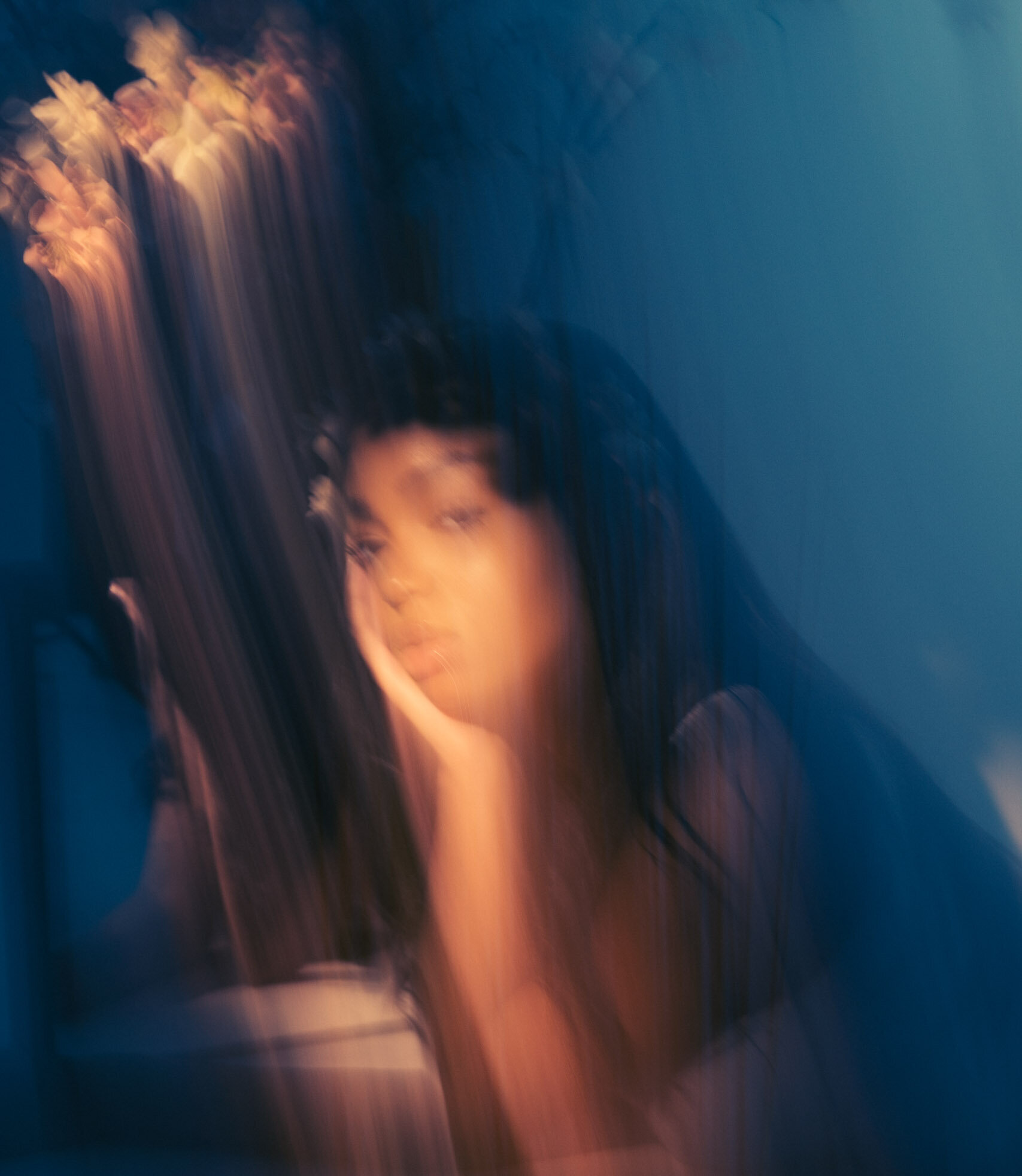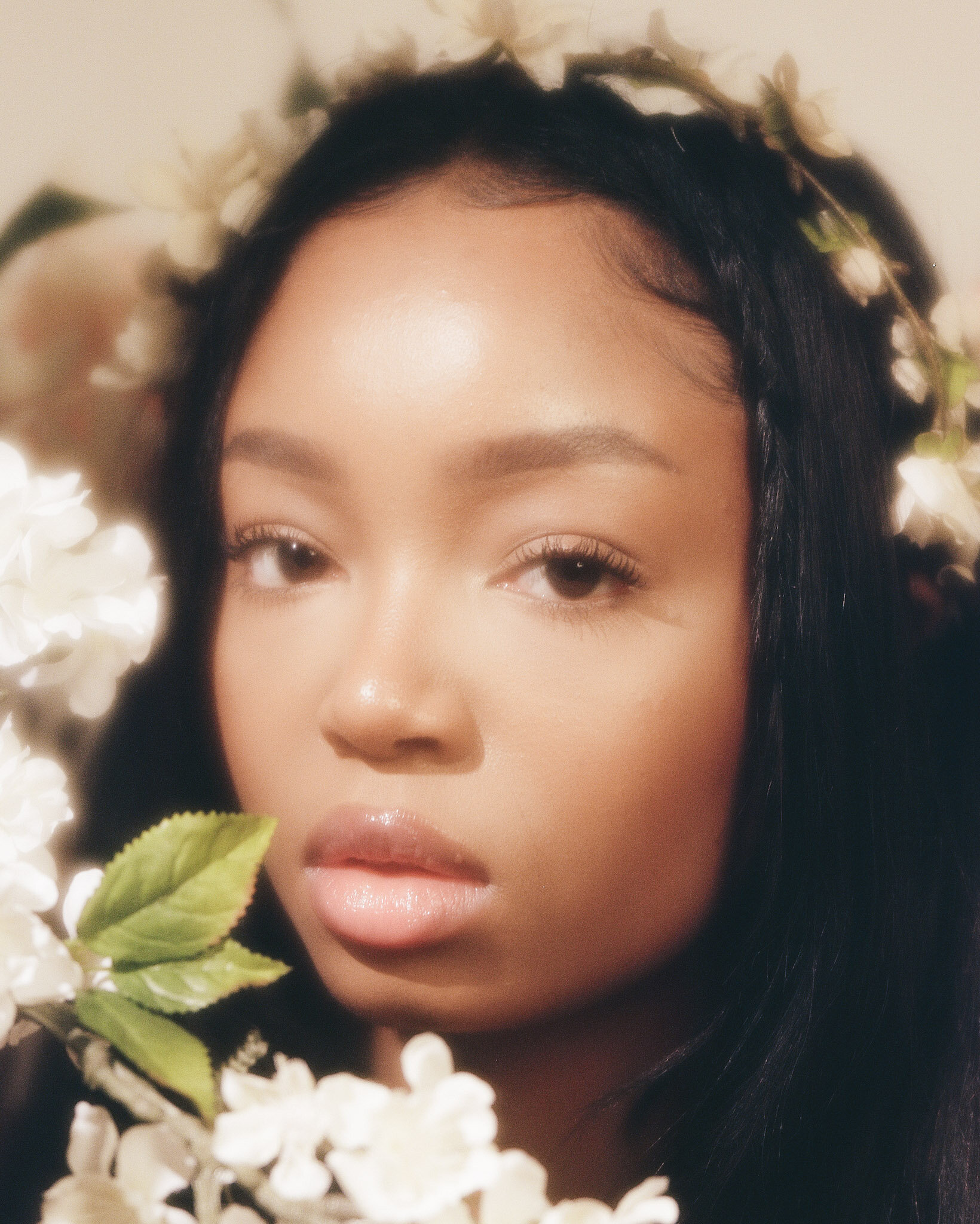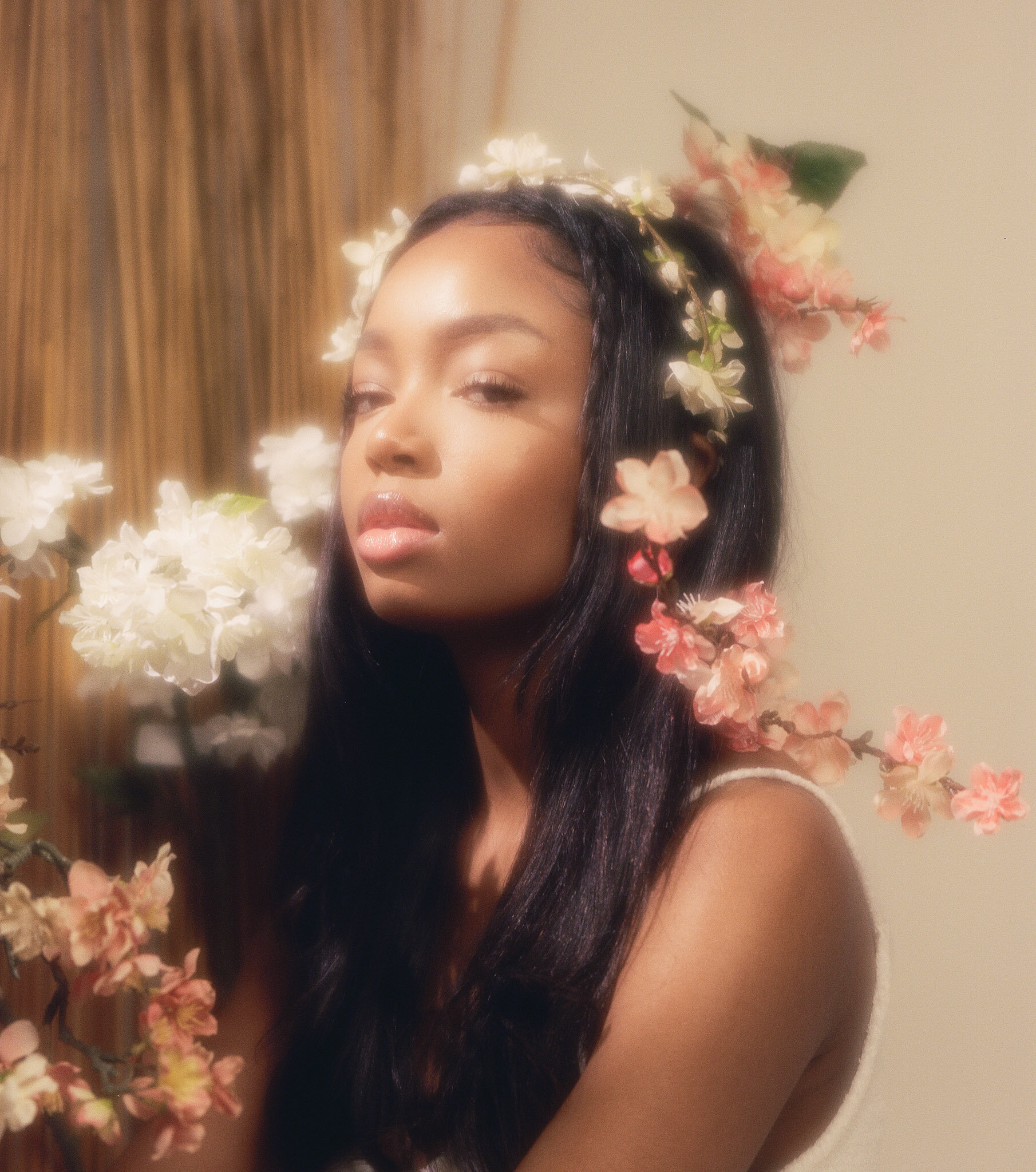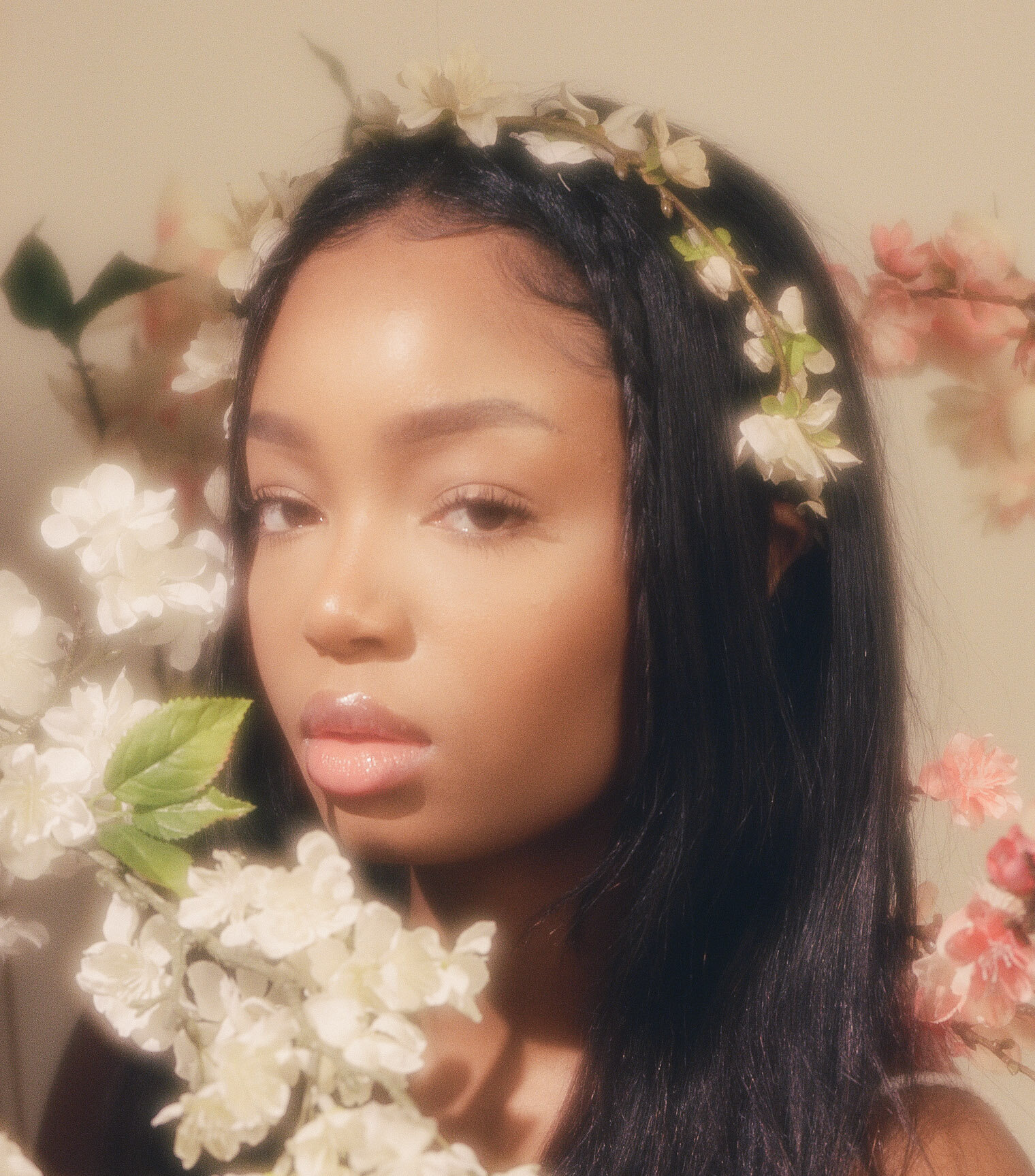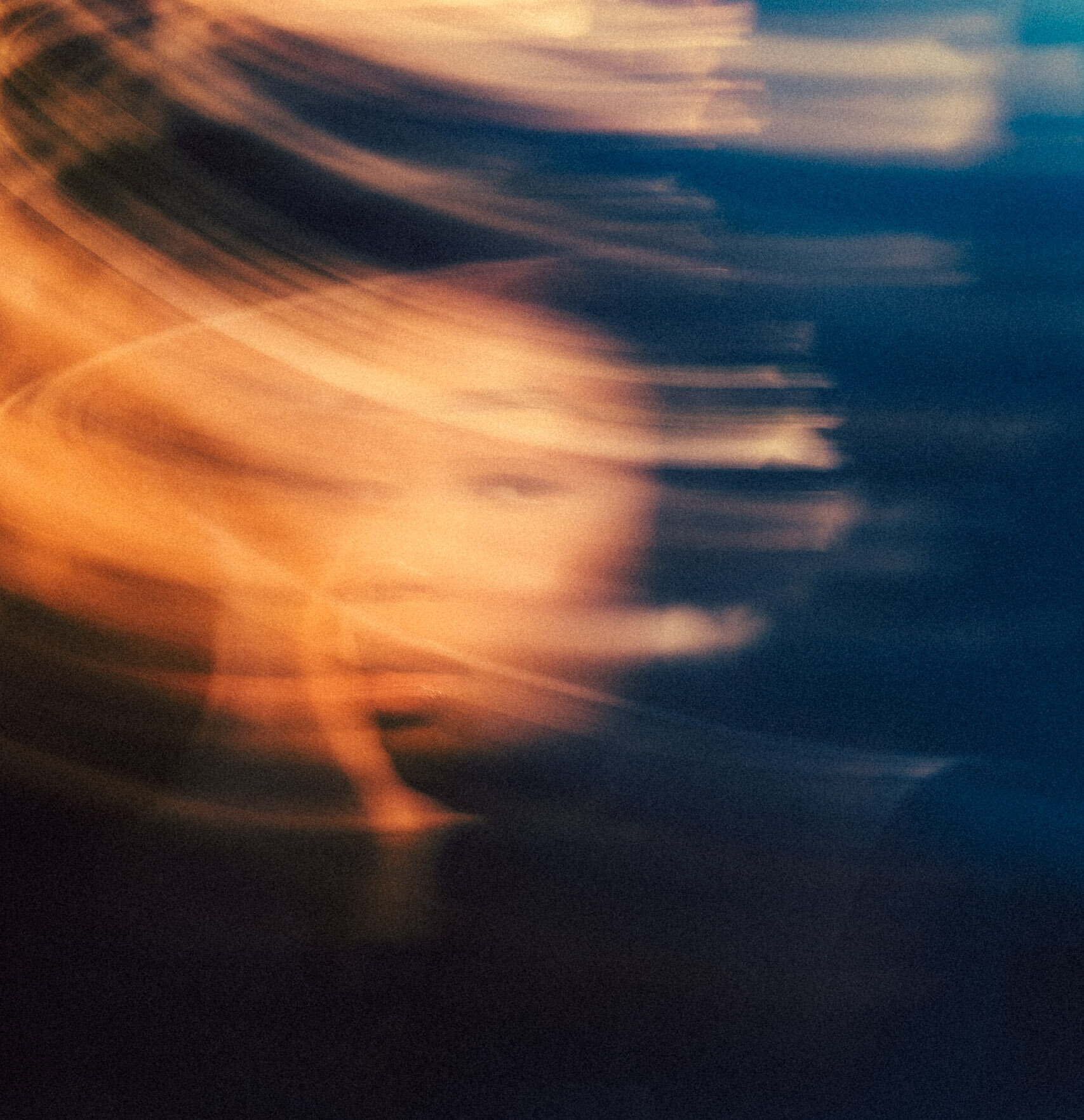In Conversation With: Dylan Reid
Dylan Reid, Oakville-based photographer, gave insight into his inspirations, motivations and Issue Two cover shoot, “Flo”.
Adeola: I wanted to start with the title, and how it incorporates into the overall vision.
Dylan: Flo is based on Florence, the model’s name. It’s how I came up with the title. But, I mean, we can take it even deeper than that, when it comes to flow—how we flow through society and the ages, getting through certain boundaries.
Basically, us being young Black individuals trying to get through things, certain professions, art, or anything like that—us getting through this world where we’re not really favoured, you can interpret it like that. Like us flowing through this time and trying to do so with ease.
Adeola: And I sort of—I saw that reflected in a couple of the photos themselves. Dylan: Mhm.
A: Where there’s a little more movement added into it.
D: Right.
A: It was more unique. If you wanted to sort of explain how you got that, what the inspiration was?
D: So basically, in the magazine statement I spoke on how through these dark times and stuff, we still shine bright as individuals. So that was how I had that idea to incorporate it—so she kind of almost looks like a torch. A flame. And with that, incorporating the movement, resembles how a light flickers through darkness. A: That’s really cool.
D: Yeah!
A: And it gives this great, old vintage effect too. Like a polaroid, or something.
D: Yeah, I started shooting digital. How many years now? Five years, I think, I’ve been taking photos. I started off taking photos with a digital camera and after a certain point of time, I started working at Henry’s. I had one of my co-workers, he was an avid film photographer and shooter. He taught me a lot about film and really all about the process. Being more intentional with what you’re doing and doing things with purpose. It’s convenient for us now because of technology, we can take 1000 photos and go through every single one, you know what I mean?
“The photo taking is all a process...the more you see it, the more ways you’re able to take a different approach to the photo. ”
A: Yeah. D: But when you’re taking photos with film, you only have a certain amount of frames, like a roll of 35 mm is 31 frames. So you have 31 shots and you have to make each one of these count, right? Because you don’t have an unlimited amount of money (laughs) A roll of film is like, what, $16? And to develop is another $18-$20 dollars. So it gets pretty expensive.
You wanna make every single shot count and in doing so, I completely moved away from digital. Not that I don’t shoot digital at all, but having the intention to take these photos is a really good practice on making things more meaningful.
A: It reflects a lot in the work, that intentionality, because I just see a multitude of different angles, different effects, some black and white, some coloured—it shows the different dimensions you’ve tried to approach the shoot from, which is just fantastic.
D: Thank you.
A: I also wanted to ask about the setting. You know, sometimes there’s blue in the background, sometimes there’s flowers incorporated, sometimes it’s really light, sometimes it’s a little darker. Did you want to speak to any part of that, the ambience of the shoot?
D: Yeah, sure, I mean, honestly, when it comes to me taking a set of photos, I don’t go in with an exact image that I’m trying to create. It’s about experimentation and finding what works best for different lighting and themes—it can really create some magical pieces.
I started off this shoot with just kind of like a blank slate, everything was light and clean. And that was to represent an angelic appreciation of Black beauty, because, you know, with media it’s not always portrayed like that.
And then it went deeper, starting to incorporate more of the flowers and really showing almost like the model, Florence, was a flower herself. And then, after some more experimentation, turned off all the lights and now it was like a darker setting, but she still shone. Even if you look through some of the photos, the flowers almost make, like, a crown? That was super intentional.
A: Yeah.
D: But then the blue was experimental, just seeing what looks good. I actually thought that when I was going through the flame-like movement photos, I thought that the red colour would construct really nicely with the blue, so that’s why I went with the blue background. I shot all of this in my basement so I didn’t really have a lot to work with (laughs) I just saw a blue bag and I put it over one of the lights I was using, so that’s how I was able to create the lighting in the back. A: Wow.
D: Yeah, all of it was very experimental. It was my first time working with Florence as well, so it was a great experience.
A: That’s fantastic! And I like how there’s a journey through it - it develops. You mentioned again, like, intention, it really, really comes through. I wanted to ask about the end of the shoot, there’s this sort of glamour, gossamer-y, feel to the photos. They feel really vintage, really 50s, really old Hollywood style. What was the intentionality behind that or how did that develop?D: At that point, it was just post-production work. So you do your shoot, you get the photos back—whether it’s film or you’re just uploading the memory card to your computer—and again, finding what works best, what looks best.
Personally, I am very, very inspired by old movies, if I look at some of my favourite directors like Quentin Tarantino or M. Night. So that’s kinda me reflecting what I love in my own work. So it’s just taking inspiration from a bunch of different places and putting them all together.
I thought with the grain in the film, it really gave the photos a nice texture? Some of the photos kinda felt like album covers. So that was the thinking process behind the final outcome of the photos.
A: And thank you for the insight into that. Did you have anything else you wanted to mention about your post production process? I feel as though when we see shoots and the final outcome and we think about the photos being taken, I don’t know if wider audiences think as much about the effort that goes in after the photo is taken.
D: Right. Right.
A: Is there anything you wanted to share about that?
D: I guess I can speak into it a little bit. For instance, I came on talking about how it’s a real set process, right? So with the film, you have a certain amount of frames in a roll, and you don’t want to go over—unless you have unlimited funds, then by all means. The photo taking is all a process—so you’re seeing the same photos and the same stuff over and over again, but the more you see it, the more ways you’re able to take a different approach to the photo.
So when it comes to post-production stuff I use Lightroom and Photoshop. First, when I’m just editing a set of photos, I’ll go into Lightroom to colour correct the photo itself. And then if I want to add special effects—I think I have a photo in the set where I incorporated like a row of the flowers, it might appear like it was taken in the photo like that, but I actually added it on top of the photo. It framed Florence’s face better.
I think of it like a sculpture. When someone is taking a hammer and a pick to sculpt out whatever they’re sculpting, let’s say it’s like a face. They know exactly where they’re going to get to that, they know where to dig. The way I view it is kind of similar to that? You know exactly what to change to get what you’re looking for. And at the end of the day, it’s digging out whatever you can about the photo. A: That shows a real mastery of a lot of elements and a lot of foresight as well, which is fantastic. That sort of ties in with what I wanted to speak about for your larger body of work. Is there any consistent process in which you approach all of your shoots? Is there a specific, you know, colour scheme you try to adhere to or type of object you try to shoot?
D: It’s funny you actually ask this, because I’m faced with this question a lot. It’s kind of weird.
A: (laughs)
D: I’m inspired by a lot of things, as vague as that sounds. I’m inspired by things in my own creative way, right, as anyone else is. But I would never say I have a particular niche, if that makes sense? I don’t really like to go with a single colour scheme, I don’t only like to shoot a certain type of subject. If you go through my body of work, you’ll see a lot of different things. Photos of landscapes and man-made structures. Admiring the patterns within those things.
Then you have a whole different side to photography when it comes to portraiture and working with different people. I would say personally that would be my favourite, because it’s that human interaction you’re having, working with another person or a team, collaborating to get whatever end result you’re looking for. But when it comes to travelling and taking photos of landscapes, that’s another super fun thing too, because you’re exploring. I love to go into an idea and not know what I’m going to get out of it.
Sometimes, and recently too, with the pandemic and COVID, I can’t really explore like that anymore, I can’t go downtown, you know what I mean?
A: Yeah.
D: That kind of challenged me to look at what we have here. I live in Oakville and a lot of people consider Oakville a pretty boring place, and a lot of photographers from Oakville, I’ve heard many times oh, there’s no spots in Oakville or oh, there’s no locations. Like, that’s foolishness. (laughs)
A: (laughs)
D: The thing is, at the end of the day, any spot can be a spot. You can make literally anything from nothing. And I think that’s the most important thing for creatives: having that eye. I’ve had this conversation with one person that inspired me actually to kind of think about things differently: my friend Frank. He showed me a better insight on viewing the world. In that sense where we’ll go on photo walks every now and then just for fun, and we’ll always be surprised what we come out with at the end of the day because we didn’t really expect to get these amazing shots out of a scenery like Oakville.
It’s very important to keep open-minded as possible and always be excited about not knowing what you’re going to get. The last thing I have to say about this is, film in general, when you’re taking a photo, you can’t see the photo, you can’t look back at the photo. So there’s a surprise factor in that too, especially if you wait a long time to develop the film. It’s its own experience.
A: That’s super inspiring—your commitment to open-endedness, you know. Being fresh, keeping that imagination—I think this goes for all artists, and that’s a really key mindset. In everything there is art, what we have in this world, we elevate and we take and we really use it. And I keep coming back to the shoot, but it really comes through in the way that you play with different elements, in the way you develop. It’s not stagnant, it really flows! (laughs)
D: Mh-hm! A: Is there anything else you wanted to add about the shoot or your wider body of work or anything behind the scenes that you thought, might as well mention?
“It really shows you, you don’t know anything. And when you come to terms with not knowing things, that’s when the magic happens...”
D: I guess the one thing I would have to say is kinda getting people to think about how there’s more than meets the eye. You may see things on social media, Instagram, and it’s not always how it seems. You might look at someone’s profile and think, wow, like this person is amazing, how did they create all these works and stuff like that. But you’re not really noticing how much work and time they’ve put into getting to where they are.
I know I have a lot of work to do when it comes to my photography. It’s more of a passion, I would say, of mine, not really a profession. I would consider myself a bit of an entrepreneur. I ran my own event company called ANTHM, which was an incredible learning experience. It’s important to keep your mind open and always have questions about things, being curious. Realizing that things aren’t always what they seem, it’s important to question everything.
I went into Henry’s, where I worked, with like 4 years of photography experience under my belt. Which really, in the long run, isn’t much. But I thought I knew basically everything I needed to know—what else was there? I was ignorant (laughs) like, what else is there for me to know? I know how to take photos, I know how to take good photos, right? But it was so humbling (laughs)
D: The first day on the job, I was like wow, I really know nothing. Like at all. I knew nothing at all. But the beauty in that was in those months I worked there, the influx of information, really enchanted my work and the way I look at life. It really shows you, you don’t know anything. And when you come to terms with not knowing things, that’s when the magic happens, that’s when you start learning a lot.
Always being open to learn like, I don’t mean to ramble on or whatever, but a good example of this is school. I don’t really like... growing up, I never really liked school. And I didn’t really have plans to go to university because I was running my business and that was going really well for me. But having said that, I basically said why not, because there is no down-side of learning more, right? So, after everything you experience in your life, you don’t want to go back and find out that you put limitations on yourself because you didn’t take the opportunity to learn things. That’s pretty much it, I guess. (laughs)
A: That commitment to being humble and constantly learning is really important...for a lot of young professionals. It’s a great message for a lot of different fields, but especially for photography. Coming in as just an observer, it does seem like, yeah, there’s so much to know. So constantly being open to that is definitely fantastic.
So... what’s next? Where do you see photography taking you? Or what direction do you see yourself pointed in?
D: Honestly, a cool next step with photography is... the magazine, like having my work showcased is already a cool next step. I’ve had my photos incorporated in a magazine-type book, but nothing to this level of being interviewed and getting insight on behind the scenes. So I would consider this a cool next step.
If I’m really shooting for the stars, right now, a really cool next step would be working on videography and filmography and that kind of scene. I have a ton of concepts where I can’t even just get the message across by just taking photos. If you go through some of my work, you can see that there is a lot of storytelling involved with the pieces or the sets. And I love storytelling so stepping into that new medium and continuing to be creative in that sense, and maybe making a short film or a movie even, would be really, really, really cool.
A: Always expand! I see so much storytelling in your photos. When you mentioned it, I was like, yeah, yeah, that seems natural. Even what you described to me in Flo, there’s narrative and storytelling. It seems intrinsic to photography, and you don’t always get it, but in this shoot, you demonstrate that for sure.
D: Thank you! And thank you for incorporating me into your new issue. That means a lot to me and I appreciate that you guys saw that it meant something and that it was special to include.
Issue Two now available!
Follow Dylan’s work:
Instagram: @sonofsee
Twitter: @markedbystain

